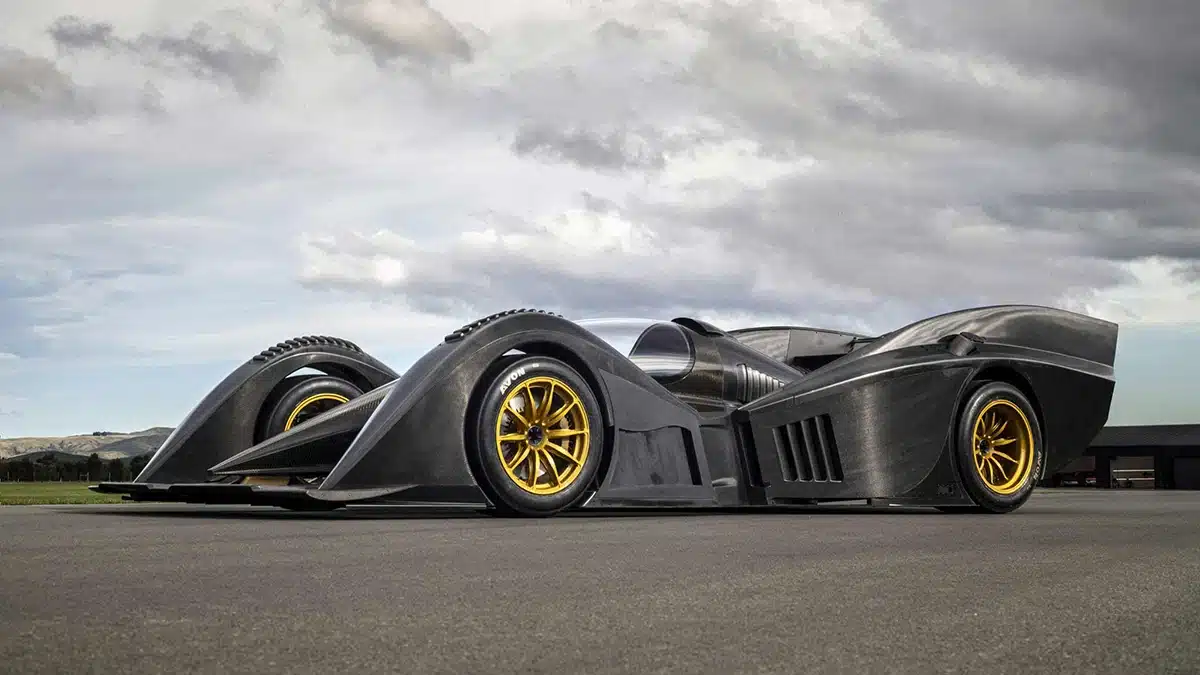“What business has choccy got doing on a car website?” you may well question. “Plenty”, we would argue.
Much like cars, chocolate comes in all shapes and sizes, colours and flavours.
As with the auto industry, the chocolate business is made up of hundreds – if not thousands – of individual companies, and each country has its own preferences and interpretation of what its end-users need and enjoy.
Just like cars, chocolate’s variety knows no bounds, so to mark World Chocolate Day (Fri 7 July), we’re celebrating how cars and chocolate have crossed paths over the years.
Fueled by chocolate
Petrol and diesel remain the two main forms of fuel when it comes to cars, with the likes of hydrogen and electricity pinching away market share, but 2009 saw the birth of a Formula 3 racing car that ran on chocolate.
The British-built ecoF3 racing car was designed and developed by scientists at Warwick University and used a two-litre BMW engine adapted to drive on biodiesel created from chocolate extracts and vegetable oil.
Its unusual fuel meant that the ecoF3 couldn’t compete in races, but with a steering wheel made from carrots and bodywork that incorporated vegetable fibres, it was the first Formula 3 car to be built from eco-friendly materials.
With a 145mph top speed and the ability to accelerate from 0 to 60mph in under 2.5 seconds, the car proved that going green could also mean going fast.
Made from chocolate
What you really want to see about now is a race car made entirely out of chocolate, right? Here ya go…
This full-size Ferrari F1 car was created for Napoli’s Scuderia Ferrari Club back in 2008.
It was constructed using 2,000 kilos of chocolate before being coated in a sweet Ferrari red top layer, and almost every inch of the car could be eaten including the wheels, tyres, body and driver’s seat.
Covered in chocolate
Sadly, that chocolate Ferrari didn’t actually move, but this chocolicious Smart Fortwo did.
Designed by Japanese luxury jeweler/chocolatier Q-Pot, this choco-themed city car was offered for a price of JPY2.36 million (£16,080), which at the time was a £3.5k uplift on the standard model. Worth every penny we’d bet.
Looks like chocolate
There are of course plenty of shiny brown paint jobs that make even some of the meanest cars look like they’d melt in the sun…
Photo: Tobias Liebing – TobSpeed-Photography
Inspired by chocolate
In 2011, engineers from Ford took inspiration from an Aero to produce lighter parts, and incorporated the bubbly insides of the floaty chocolate bar by injecting gas bubbles into plastic parts during manufacturing to reduce their weight by around 20 per cent.
These honeycomb-like structures – named MuCell – were used on some of Ford’s most popular cars such as the Focus, Mondeo, C-Max, S-Max and Galaxy.
Ford’s MuCell technology expert Carsten Starke commented at the time: “The bubbles in the chocolate change the taste, but in our plastics, they save weight and making cars lighter reduces emissions and fuel consumption significantly.
“Lighter cars handle better, accelerate faster and stop more quickly. For the customer, it’s a win-win. The plastic is 20 per cent lighter without increasing cost or reducing strength and it will help make their Ford better in almost every aspect.”
So there you go. Hopefully, we’ve convinced you that the seemingly unconnected worlds of cars and chocolate actually have plenty in common.
For more articles like this, receive our weekly e-newsletter, including partner deals and all things motoring, register your email below.
Please note: You cannot subscribe to Smart-Motoring unless you put a tick in the checkbox below to indicate have read and agreed to our privacy policy.













Leave a Reply
You must be logged in to post a comment.